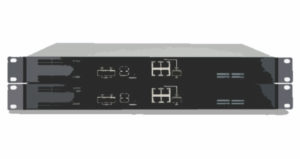Green SD-WAN
Shrink your carbon footprint with a Cloud-Delivered SD-WAN.
A cloud-delivered software-defined wide area network (SD-WAN) lowers carbon footprints by deploying fewer branch office devices, using cloud-delivered services and orchestration, sharing resources through virtualization and multi-tenancy, optimizing connectivity and bandwidth efficiency, and reducing cooling and power requirements in the branch office. This is friendly to the environment, and to your IT budget.

Demands in the branch office continue to grow…
Branch office growth is not tapering off — neither in the number of locations, nor in the requirements for enterprise-grade functionality and ubiquitous access. Branch personnel need predictable and high-performance access to a burgeoning suite of applications, hosted almost anywhere, to get their jobs done. Network access and response times are crucial. As is security. Over time you’ve deployed any number of devices in each branch office to implement security, business policies and traffic management. Each device has lights and a fan—the heat collectively generated necessitates round-the-clock cooling. Your company’s aggregate monthly energy consumption is eye-popping.

…while resources used must reduce.
The corporate green computing directive is clear: dramatically reduce the environmental impact of IT operations. This is a hard job, with harder numbers, which translates in practice to: maintain growth and provide cutting-edge functionality in every branch office — oh, and don’t forget the new ones still to be rolled out — while at the same time delivering 40%, 50%, 60%, 70% improvements on that energy bill. Fortunately, there are numerous trends and technologies available to help you achieve this.

Never visit the site.
One truck roll is estimated to average 100 miles; for 100 branch locations this equates to 4 metric tonnes of carbon emissions. With the zero-touch deployment capability of a cloud-delivered SD-WAN, there are no more truck rolls—everything is orchestrated from a central, eco-friendly site at a location preselected for its commitment to using only renewable energy. Applications are moving increasingly into the cloud, so are network services when using an SD-WAN. When the applications and the network devices serving the branch office are not physically present there, you never have to go there to install, patch, upgrade or fix them. They use no branch office power, and require no cooling

Connect with less, for less.
An MPLS circuit is expensive. It also requires a custom install to your branch office location. Connecting instead via LTE requires no additional cabling footprint over the pre-existing regional cellular infrastructure. Broadband reuses pre-existing urban cabling. An SD-WAN provides enterprise-grade application access, security and network response times to your branch offices independent of the physical transport.
The SD-WAN load-shares and optimizes available bandwidth, provides optimal traffic delivery to cloud applications, and phases out the footprint of traffic backhauled via your data center.

A single thin device on the power grid.
A lean branch using an SD-WAN requires only a thin edge device. No more single-function devices for every conceivable network function including firewalling, content delivery, WAN optimization, web filtering, malware detection, VPN establishment and aggregation, packet steering, load-sharing, bandwidth management—all of these move to the cloud, eliminating the need for single-function devices in the branch, and allowing orchestration to be done remotely.
There are also data center benefits. Using cloud-delivered SD-WAN gateways, traffic can enter headless data centers without the need for multiple headend devices to secure, redirect, load-balance and filter traffic. This lowers both power data center consumption and cooling requirements.

Share everything.
Virtualization, cloud hosting, and multi-tenancy architectures allow many diverse applications and services to share physical servers. It provides scalable, on-demand access for users from anywhere, enhances failover designs, and significantly improves the algorithmic efficiency of energy consumption. It has been estimated that, on average, a single-application server may be 5%-15% utilized, while powered 100% of the time doing no additional useful work. Virtualization can result in a 10 to 1 server consolidation, dramatically shrinking energy consumption and bolstering efficiency that result in up to 75% less carbon emissions.
A cloud-delivered SD-WAN moves networking services, and its orchestration, into this efficient virtualization architecture. An SD-WAN also aggregates and load-shares available links and transport methods in a branch office location to dramatically increase bandwidth utilization.

